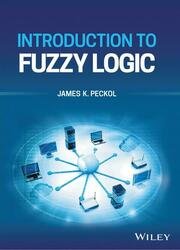Introduction to Fuzzy Logic
- Добавил: literator
- Дата: 2-08-2021, 20:23
- Комментариев: 0
 Название: Introduction to Fuzzy Logic
Название: Introduction to Fuzzy LogicАвтор: James K. Peckol
Издательство: Wiley
Год: 2021
Страниц: 307
Язык: английский
Формат: pdf (true)
Размер: 10.1 MB
Learn more about the history, foundations, and applications of fuzzy logic in this comprehensive resource by an academic leader.
Introduction to Fuzzy Logic delivers a high-level but accessible introduction to the rapidly growing and evolving field of fuzzy logic and its applications. Distinguished engineer, academic, and author James K. Peckol covers a wide variety of practical topics, including the differences between crisp and fuzzy logic, the people and professionals who find fuzzy logic useful, and the advantages of using fuzzy logic.
While the book assumes a solid foundation in embedded systems, including basic logic design, and C/C++ programming, it is written in a practical and easy-to-read style that engages the reader and assists in learning and retention. The author includes introductions of threshold and perceptron logic to further enhance the applicability of the material contained within.
After introducing readers to the topic with a brief description of the history and development of the field, Introduction to Fuzzy Logic goes on to discuss a wide variety of foundational and advanced topics, like:
A review of Boolean algebra, including logic minimization with algebraic means and Karnaugh maps
A discussion of crisp sets, including classic set membership, set theory and operations, and basic classical crisp set properties
A discussion of fuzzy sets, including the foundations of fuzzy set logic, set membership functions, and fuzzy set properties
An analysis of fuzzy inference and approximate reasoning, along with the concepts of containment and entailment and relations between fuzzy subsets
Perfect for mid-level and upper-level undergraduate and graduate students in electrical, mechanical, and computer engineering courses, Introduction to Fuzzy Logic covers topics included in many Artificial Intelligence (AI), computational intelligence, and soft computing courses. Math students and professionals in a wide variety of fields will also significantly benefit from the material covered in this book.
The book is intended for students with a broad range of background and experience and also serves as a reference text for those working in the fields of electrical engineering and computer science. The core audience should have at least one quarter to one semester of study in Boolean algebra and crisp logic design, facility with a high‐level programming language such as C, C++, or Java, and some knowledge of logic devices and operating systems, and should be an upper‐level junior or senior or lower‐level graduate student. Some background in formal system design, test, embedded systems, and analog fields would also be helpful.
Скачать Introduction to Fuzzy Logic
Внимание
Уважаемый посетитель, Вы зашли на сайт как незарегистрированный пользователь.
Мы рекомендуем Вам зарегистрироваться либо войти на сайт под своим именем.
Уважаемый посетитель, Вы зашли на сайт как незарегистрированный пользователь.
Мы рекомендуем Вам зарегистрироваться либо войти на сайт под своим именем.
Информация
Посетители, находящиеся в группе Гости, не могут оставлять комментарии к данной публикации.
Посетители, находящиеся в группе Гости, не могут оставлять комментарии к данной публикации.
